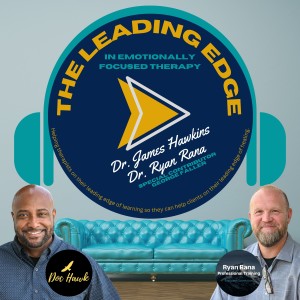
Block School 101
Blocks occur along the road to helping people have success in vulnerability; having moves to work with those blocks will increase your effectiveness. Blocks are a way of telling you are on the right track. How good you are as a therapist is determined by how effective you are at working with people’s blocks. Pro’s know how to work with their client’s mistrust and defenses. Success with blocks is a combo of how distressed the relationship is and how good the therapist is at working with distrust. In this episode, we discuss the who, what, when, where, why, and how of blocks.
Who experiences blocks? – Any attachment oriented human. All people hesitate and hold back.
What is a “block”? – blocks are a break in the natural attachment process.
- Their reach is blocked.
- It’s not safe to reach.
- Blocks are mistrust in action.
- We are helping people unlearn their rigid dependence on their protection.
When do blocks come up in the process? – Blocks can happen at any point in the process, and they tend to look different in each stage.
- Stage 1- more reactive blocks. Don’t allow vulnerability or needs to be accessed. (blame, view of other)
- Stage 2- depth block. Blocking access to model of self, or disowned parts of self ( view of self, can tell you I’m sad but don’t want to show or see how I feel about me)
Where do blocks tend to happen in session? – right before a breakthrough. Right when you are on track and right before the person is about to go to the place they are supposed to go. For experienced therapist the blocks actually indicate the right whole to fish in.
Why do these blocks occur? - the natural function of the body to protect us from danger so the body sends up energy. body saying this is familiar. It's about to happen again. You are about to get hurt.
What Not To Do.
- Be surprised: Expect blocks to occur when you are trying to open up people’s attachment channels. The blocks are what they are needing you to help them with.
- Be Disappointed: Don’t treat their blocks like a hindrance to your work. See blocks as indicators of where the work needs to occur.
- Teach/Try Harder: You can’t psycho-ed clients out of blocks. They have been trying aspects of this before they came to see you. Before they came to you, they have hundreds of thousands of disappointing attempts of trying to outwork these blocks.
- Shame: Blaming them or showing them how they are at fault. “The reason you are in this situation is because you…”
- Let blocks win/lose focus: The block disorients the therapist and the therapist aborts the mission of working with emotion in the attachment channel and this moves to some more 1st order type of work.
What To Do:
- See them coming they are telling you you’re on track.
2-part response
- Give it permission (honor it and validate it with attachment function)
- “That makes sense to me”
- “Of course”
- “How would you do anything else?”
- 3 forms of validation then push into the leading edge.
- And yet this anger communicates something else in this cycle
- Push into the leading edge
Thank you for listening. We hope this experience helps you push the leading edge in your work to help people connect with themselves and with each other.
You can contact us at pushtheleadingedge@gmail.com
And you can follow us on our Facebook page @pushtheleadingedge
You can follow Ryan on Facebook @ryanranaprofessionaltraining and on his website ryanranatraining.com.
You can follow James on Facebook and Instagram @dochawklpc. You can also check out his website dochawklpc.com.
You can follow George @ https://www.georgefaller.com/.
No comments yet. Be the first to say something!